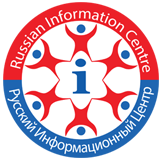Location : KUNSTKAMERA
Saint Petersburg
Located on the Neva Embankment in the historical center of St. Petersburg, the Kunstkamera building has been a symbol of the Russian Academy of Sciences since the beginning of the 18th century. The museum, founded by decree of Peter I, opened its doors to visitors in 1714. It was created with the aim of collecting and researching rarities created by nature and human hands.
The present collection of the Peter the Great Museum of Anthropology and Ethnography (Kunstkamera) of the Russian Academy of Sciences is one of the most complete and interesting in the world. It has more than a million exhibits and reflects the diversity of cultures of the peoples of the Old and New Worlds. At the same time, the museum has always been and continues to be one of the largest research centers for studying the cultural heritage of man, continuing the traditions of the great Russian ethnographers and anthropologists of the 18th-20th centuries.
Contemporaries wrote that, according to the richness of the Kunstkamera’s collection, “they almost left all the other museums of Europe behind them.” Visitors were kindly welcomed, offered “coffee and zucerbrods,” and Hungarian with snacks for those who were more familiar. In Western Europe at that time, they paid a fee for visiting such museums, and at the same time a considerable amount. In the St. Petersburg Kunstkamera, collections were shown for free. The museum was conceived and created for educational purposes; Peter believed that hunters to knowledge should be “taught and treated, and not take money from them.”
